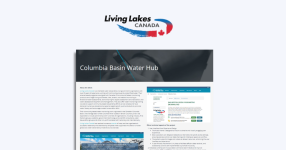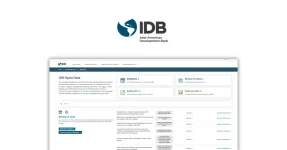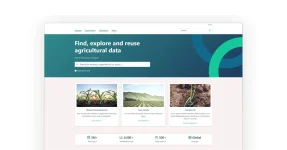Finding what you need in the landscape of data can sometimes feel like a daunting task. But what if there was a way to make all that data more easily discoverable and usable? That’s where Data Catalogue Vocabulary (DCAT) is essential. This standard, recommended by the World Wide Web Consortium (W3C), aims to bring order to the chaos by providing a common language for describing datasets.
The following article will be useful for data professionals in organisations that want to improve their data management and sharing capabilities, rather than having to build custom solutions from scratch by using DCAT and DCAT Application Profiles.
What is DCAT?
So what exactly is DCAT? Simply put, it’s a set of terms that data publishers can use to provide information about their datasets, like the title, description, keywords, publisher, and so on. By using these standard terms, different data catalogues can ‘speak the same language’ and share information more easily. “Interoperability is like a big word that essentially means that different systems play well together,” says Adria, Senior Solutions Architect and a DCAT expert.
Getting started with DCAT is easier than you might think. Organisations can begin with basic features and add more complex ones as they grow. It’s like learning a new language; you start with simple phrases and gradually build up to more complex conversations.
What makes DCAT particularly powerful is its flexibility. While it works globally, different regions and industries can create their own special versions called ‘application profiles.’ For example, European organisations use DCAT-AP, a version specially designed for their needs. This flexibility ensures that DCAT can serve both general and specific requirements.
DCAT specification allows for the creation of application profiles, which are essentially more targeted specifications for specific domains.
Modern technology increasingly relies on good data sharing. Artificial intelligence and machine learning systems especially benefit from DCAT because it helps them find and use data more efficiently. Organisations that don’t use DCAT risk falling behind, as their data becomes harder for others to find and use.
Popular data management platforms like CKAN now include DCAT support built in. This makes it even easier for organisations to start using this important standard. As more organisations adopt DCAT, sharing data becomes smoother and more efficient for everyone.
Risks of not adopting the DCAT
- Decreased discoverability and interoperability of your organisation’s data. Without a common standard for describing metadata, other systems and applications will have difficulty discovering and integrating with your data.
- Lost opportunities and value. By not adhering to a widely adopted standard like DCAT, you may miss out on opportunities to collaborate and share data with other organisations, limiting the potential value and impact of your data.
- Potential compliance issues. In some regions or domains, adopting standards like DCAT-AP may be mandated or required, so not doing so could lead to regulatory or legal challenges.
- Increased complexity and costs. Building custom, non-standard metadata management solutions can be more time-consuming and expensive than leveraging an established, community-driven standard like DCAT.
DCAT isn’t just helpful—it’s becoming essential. By making data easier to find, share, and use, DCAT helps organisations work together better and make the most of their information resources.
Key steps for organisations to adopt DCAT
DCAT provides a good starting framework to initiate discussions within the organisation about how to describe their internal metadata. It provides them with a pre-defined set of vocabularies and properties from which they can select.
Organisations don’t need to adopt the entire DCAT specification right away. They can start by identifying the core DCAT properties that are most relevant, like description, keywords, publisher information, provenance, etc., and gradually build out their metadata schema from there.
DCAT allows for the creation of application profiles, which are more targeted specifications for particular domains or regions. So organisations can look at profiles like the Data AP Profile for EU data portals and use that as a guide for their initial DCAT adoption.
The key is that DCAT provides a common framework that many systems already use, so it gives organisations a head start instead of having to build everything from scratch. It allows them to leverage existing vocabularies and best practices.
Key points to remember
- DCAT provides a common set of properties and vocabularies to describe data on the internet, enabling interoperability between different data catalogues and publishing systems.
- DCAT can support AI and machine learning initiatives by providing well-structured metadata for data ingestion and training of models.
- DCAT has application profiles (APs) that provide more specific guidance for regional or domain-specific use cases, such as the EU’s DCAT-AP and the US government’s DCAT-AP-US.
- The risks of not adopting DCAT include reduced data discoverability and interoperability, potentially leading to missed opportunities and loss of value.
- CKAN, an open-source data portal platform, provides out-of-the-box DCAT compliance through the ckanext-dcat extension, which simplifies the implementation of DCAT-compliant metadata.
Interested in watching a video conversation on adopting open data standards? Check out the interview I had with one of the main CKAN experts, Adria Mercader, in the third episode of Tuesday Talks.



